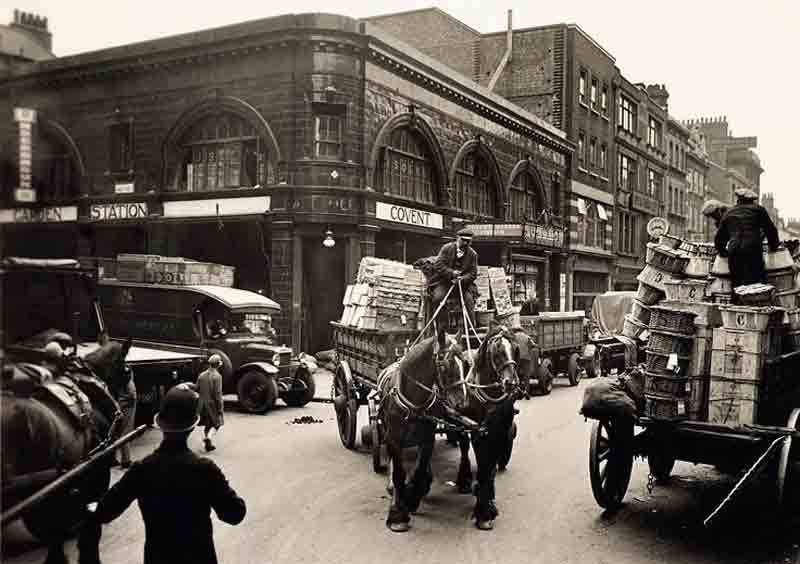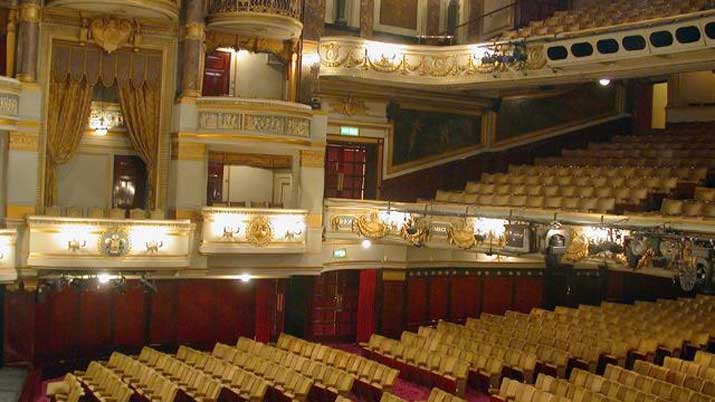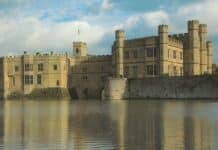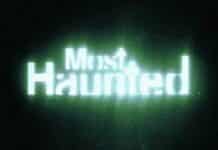Covent Garden is full of haunted places to visit, as JON KANEKO-JAMES discovers on this stroll around central London

The Royal Opera House
The Royal Opera House, home of the Royal Ballet, incorporates parts of what was originally the Covent Garden Flower Market, which was absorbed by the main opera house in the 1990s.
The Opera House has been destroyed by fire twice, each time rising from the ashes as the Royal Opera Company perform at the Nearby Theatre Royal, Drury Lane.
The Opera House’s most recent ghost came about with the 1990s renovations: scaffolding towers would rock uncontrollably, heavy objects would be flung through the air, sometimes directly at workers.
Even later, during a performance in the new space, a bucket of bolts was picked up and hurled at a performer from the top of a lighting rig. Some say the poltergeist is the ghost of a Covent Garden personality, Charles Macklin, who also haunts the Theatre Royal Drury Lane, others that it might be the spirit of a disturbed market worker, angry that the opera house has taken over the old flower market.
The spirit could even be something more primal: Covent Garden is the site of the Saxon settlement of Ludenvic, the first major settlement to rise up in the wake of the Romans abandoning their fortress of Londinium in 46 AD.
Temple Gardens
The Temple is an almost hidden district of London, tucked away just off the strand. The current incarnation of the Temple is a mixture of 17th, 18th and 19th Century buildings, plus the historical Temple Church, one of only two round chapels in the UK and built to directly mirror the proportions of the original Temple in Jerusalem.
The Temple area was originally the stronghold of the Knights Templar, moneylenders, warriors and mystics who frightened the crowned heads of Europe so badly that they crushed the Knights Templar, breaking up all the orders, executing their members and reallocating their lands. After the Templars, the Temple was first given to his favourite nobleman, and then to the lawyers of London.
Strangely, despite the rumours of Satanism and black magic attached to the Knights Templar, it was during this period that the Temple became haunted: Judge Henry Hawkins often appears to folk in the Temple Gardens, only appearing when there is exactly one person in the garden.
He sits, serene and deep in thought, sometimes getting up to glide around incorporeally, bumping into things that he drifts completely through. Unlike many ghosts, he apparently doesn’t disappear immediately, drifting around until he feels like moving on in his own time.
Covent Garden Tube Station
Covent Garden tube station was built as a part of the Piccadilly Line in 1907, as a part of the line opened by the Great Northern, Piccadilly and Brompton Railway. From the start there were rumours of something strange about the Piccadilly line ploughing through the sacred square: the local priest protested against the digging of the line because he believed that it would open up a gateway into hell.
Before the station was there, there were a run of shops that had been there since the early 19th Century. Longacre, the street on which the tube station stands, is a historical street stands: here the first bicycles were made in the workshops of Denis Johnson, the Oldhans Press printed the popular magazine John Bull and Sir Henry Irving met his wife, Lady Irving, while playing his first Shakespearean role. The shop blotted out by the tube station had once been a bakery, one of the finest in the area, which leads to the reason for its haunting…
William Terriss was an actor, a celebrity and a passionate proponent of charity. He was involved with the actor’s benevolent fund and met a terrible end elsewhere in Covent Garden. It is here, however, that he haunts: the site of the bakery that he visited almost every day during his life.
All the way through the 20th Century, since his death in 1897, the shade of a handsome man in a hat and cape has been seen walking through the walls of the Covent Garden tube station. Seen all the way through the 1960s and 70s the ghost was last seen in 1972.
Seven Dials
Seven Dials in Covent Garden is a convergence of seven mysterious backstreets deep in the streets between Shaftesbury Avenue and Longacre. The centrepiece is a sundial column with six faces, each one a sundial, with the pillar itself forming a sundial that tells the time around the crossroads as the day goes by.
The convergence was a part of the dangerous and filthy Rookery of St. Giles, with it’s monument designed by Thomas Neale in the 1790s. The Seven Dials appeared in print numerous times: from Charles Dickens to Agatha Christie and beyond.
The ghosts of seven dials date back to the 18th and 19th Century, when a rumour started abounding that the man behind Covent Garden itself, the Earl of Bedford, had been buried under the column, with a haul of gold and treasures. The rumour got so badly out of control that the authorities held a public exhumation of the non-existent ‘grave’ under the monument, publicly showing that there was nothing buried underneath, before removing the column itself and the traffic island around it.
The ghosts are the ghosts of the drunks, fools and chancers who each took themselves out to the poorly lit crossroads of Seven Dials on moonless nights to try and make themselves rich looking for the Earl’s buried gold. Seven Dials was not the sort of area where riders or carriage drivers would stop for any sort of unexpected obstacle, and many late-night treasure hunters were killed by fast moving vehicles. To this day, drivers going through Seven Dials in Covent Garden on moonless nights have seen momentary glimpses of figures rising out of dark holes in the road, vanishing as the headlights fall on them.
Theatre Royal, Drury Lane

The Theatre Royal in Covent Garden is incredibly haunted. It had been incarnated three times due to renovation and fire, heralded by Charles II after the return of the monarchy and the birth of the City of Westminster as a centre for the new age of London Theatre. The current theatre was built in 1812 after an early version had burned down, and there had been several waves of renovation, and has survived two world wars, including several near misses by German bombs during the Blitz.
The ghosts are too numerous to count. The Theatre Royal could (and likely, will) be an article in its own right, but if any Spooky Isles readers find themselves in London they would do well to take the Theatre Royal Tour, for as they do, they might well see a figure in grey crossing the theatre galleries.
The figure was first seen by a fireman who was evacuating the Theatre during a bombing. Bombs had fallen nearby and the foundations of the Theatre Royal were thought to have cracked, endangering the Theatre’s stability. It’s said that as the fireman was doing one last sweep of the auditorium he saw a figure in a grey coat and tricorn hat drifting along the isles and through a door.
Assuming the figure was an actor, the fireman called after him and gave chase, delving into the back corridors. The fireman pursued the figure, which drifted along just ahead of him until coming to a seeming dead end: with a great crack in the wall.
Suddenly, to the Fireman’s surprise, the figure stepped through the wall into the crack and vanished. Upon further investigation, he discovered a skeleton in a grey coat and tricorn hat, crammed into a tiny hole that had been bricked up. Later investigation showed that the figure’s ribs had been damaged in a way that was consistent with a stab wound. The man’s exact identity is unknown, but it’s thought he might be a young nobleman who became fascinated with one of the actresses during the theatre’s 1812 renovation, and fell foul of her jealous lover…
Discover London’s 22 most haunted theatres here!
Have you seen a ghost in Covent Garden? Tell us in the comments section below!









